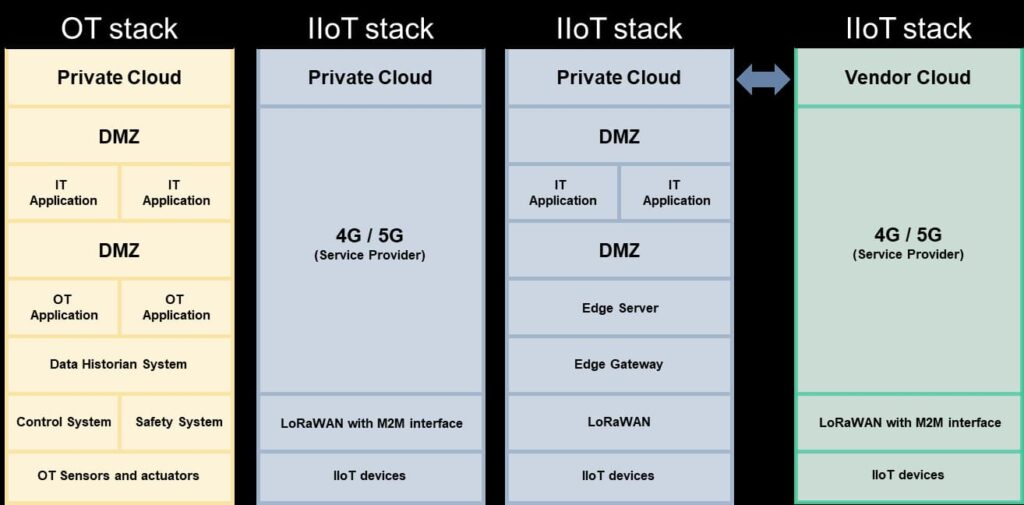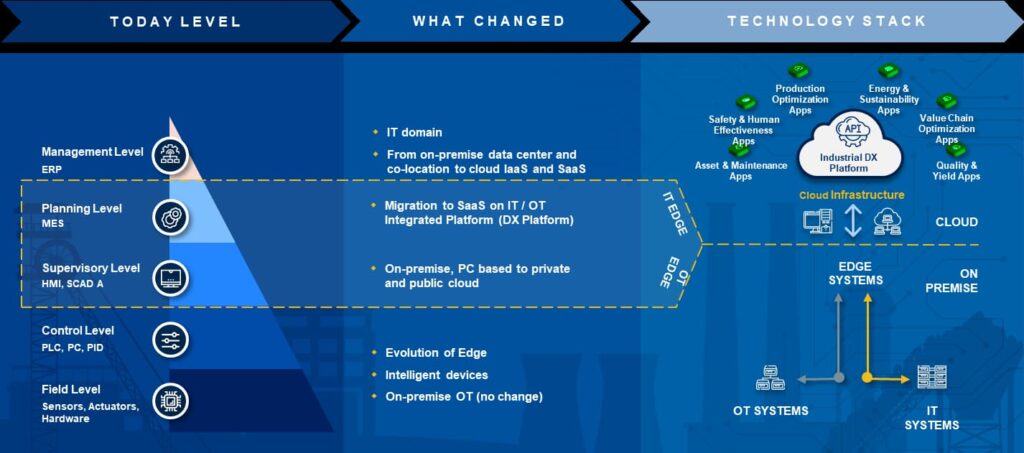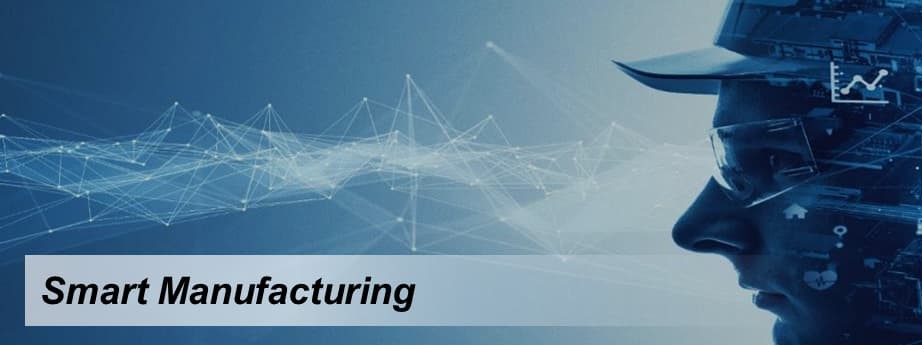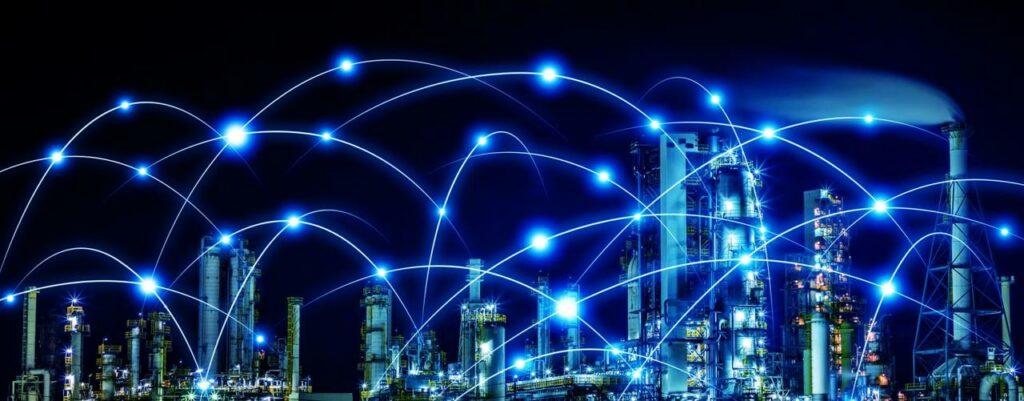My journey to Italy
When it comes to Smart Manufacturing, many companies have difficulties in how to implement it, even though most of the manufacturers have considered it as a must-have. Before I tell you more about Smart Manufacturing and the technology, let me share with you an analogy for a better understanding.
Sixteen seems to be my personal number of fate. For sixteen years, I have travelled to Italy for a holiday together with my family. For sixteen years, I have taken my car for the sixteen-hour journey from the Netherlands to our destination in Italy. I can still recall the first time, we jumped in the car on a Friday afternoon and started driving. It was a long and tiring journey due to the many traffic jams and distance. After arrival, it took us two days to recover before we could start to enjoy our holiday. As a creature of habit, it took us two years before we realized that we had to change our usual travel plans.
In recent years, we decided to travel on Friday evening to avoid the many traffic jams in the daytime. I realized that we were not the only people travelling on Friday to the South. During driving, I took a good rest and reactivated my energies with an energy drink. I am not fond of the taste of these energy drinks, but it helps me to stay awake. The combination of driving in the evening, enough rest, and an energy drink was a big improvement. However, it still took us a full day to recover after arrival. Again, it took us a couple of years to acknowledge the fact that we needed to change the plan once more.
Now we depart on Thursday evening instead of Friday. No more energy drinks, a good power nap every two hours, and ample travel time is doing wonders. On Friday we take a hotel in the North of Italy and on Saturday we travel for another three hours to our destination. On arrival, we are completely relaxed and able to enjoy our holiday from the first hour. Sometimes I wonder why took it so many years to find out the best way of travelling to Italy.
Excursus: Smart Manufacturing
What is Smart Manufacturing in Process Industries?
According to Wikipedia: Smart manufacturing is a broad category of manufacturing that employs computer-integrated manufacturing, high levels of adaptability and rapid design changes, digital information technology, and a more flexible technical workforce.
According to the IEC, the ultimate goal is to interconnect every step of the manufacturing process. Factories are organizing unprecedented technical systems integration across domains, hierarchy, geographic boundaries, value chains, and life cycle phases. This integration will only be a success if the technology is supported by global consensus-based international standards.
The journey to Smart Manufacturing
About two years ago, customers asked me if we could provide services for (big) data analysis in the Cloud. Big data was at the time already trending. When I asked the customer what kind of results they expected and what data was to be analyzed, they could not provide a clear answer. So there was a defined goal missing. It was obvious that the customer and I were at the beginning of the Smart Manufacturing journey. We had some thoughts about what we want to achieve but very little experience of how to get to our ‘destination’. Sometimes you have to start from scratch or with little experience when new technologies are on the rise. During my two-year journey, I developed an increased understanding of the meaning and impact of Smart Manufacturing.
Do you know your roadmap to Smart Manufacturing?
Initially, my focus was on the outcome of the solution such as data analysis and gradually leading to machine learning and artificial intelligence. Just imagine what you can do with analyzing comprehensive field data. You could really make the step from preventive maintenance (based on what has happened) to predictive maintenance (based on what is going to happen).
There remain two problems.
In many cases, there is not enough data (read sensors) available to do a proper analysis. Secondly bringing data to the Cloud is easier said than done.
How to overcome the hurdles
To overcome these problems, I had to change my strategy. Instead of focusing on the outcome of the solutions, I decided to focus first on the technology stack. The technology stack is the data highway from field sensors to the Cloud.
Similar to my journey to Italy, initially, I had a simple understanding to reach my destination:
- Step in my car → buy a piece of technology
- Drive as fast as possible (within the speed limits) → deploy the technology
- Enjoy my holiday → do the data analysis to improve
It turned out that it is harder than I thought because there are so many options and choices to implement a secure and reliable transfer of data from sensors to the Cloud.
IIoT is a game-changer
In my blog ‘Why do I need IIoT?’ you can read why IIoT is a game-changer for our industry.
OT and IIoT for sensors are not the same, although both are in the OT domain (the production environment). OT refers to data from sensors, including systems and infrastructure for control and safety with a strong emphasis on availability. However, not every process in the OT domain, for example, maintenance for non-critical assets, needs these expansive and high availability sensors and systems.
IIoT is new for the production environment with sensors for less critical applications. Since the price for deploying IIoT sensors is much lower than the traditional 4-20 mA sensors, adding more sensors increases the value of the data obtained. We already have examples where companies have deployed IIoT sensors with algorithms running in the Cloud to do predictive maintenance. The projects were a great success with a return on investment of less than six months.
The technology used for transferring OT data and IIoT data from the production environment to the Cloud is called the technology stack. It has the following layers:
- Wireless network for collecting the data from the wireless sensors
- Service provider for data sent directly to the Cloud via 4G/5G
- Edge gateway as the interface between several OT systems and the edge server
- Edge server as the interface between the OT domain and the Cloud
- The Cloud for data storage, processing, and information sharing

Why you need to choose the right technology for Smart Manufacturing
Before I elaborate more on the different layers, I want to explain why it is challenging to select the technology to build your technology stack:
- The existing infrastructure (Brownfield) has a long history with many brands and different equipment often not suitable to expand for the IIoT infrastructure
- Preferably the existing OT infrastructure and new IIoT infrastructure are integrated because for deep analysis, data from the OT and IIoT are required
- Cybersecurity strategy for the OT and IIoT infrastructure
- New skills and competences are required
Over the last two years, I have seen many companies implementing Proof of Concepts (PoC) to learn more about how technology can contribute to the transformation of the company. Although these PoCs have provided valuable information, it has rarely contributed to the overall Smart Manufacturing strategy.
This year we have received requests from many companies to ask if we could help them with developing a Smart Manufacturing strategy and a master plan driven by technology. I firmly believe that many companies are embracing Smart Manufacturing. So, they start first with the development of a Smart Manufacturing strategy and master plan before continuing with the next PoC. Part of our services to customers is to help them with the strategic decisions about the design and deployment of the technology stack.

The Technology stack for Smart Manufacturing
The cornerstone of Smart Manufacturing is a combination of different technologies. To understand the building blocks behind the technology stack, I have grouped the most relevant technologies into different layers: from the sensor to Cloud.
Wireless networks
Wireless networks are not new in the OT domain. Wi-Fi, ISA100, and WirelessHART have been on the market for a while. Although all these technologies are working effectively, these technologies are not game-changers for Smart Manufacturing and have limitations with respect to cost and technology.
With the introduction of IIoT devices, the LoRaWAN entered the OT domain. LoRaWan is a low cost, Low Power Wide Area (LPWA) network deployed in a star-of-stars topology. LoRaWan works with gateways (access points) for relaying messages between end-devices and a central network server including the Cloud. LoRaWAN has unique 128-bit keys for network and application. We have performed wireless projects with Wi-Fi and LoRaWAN in an industrial environment. From experience, we have noticed that the amount of LoRaWAN gateways is significantly lower (approximately 10x) in comparison with the Wi-Fi access points to cover the same area.
This does not mean the other wireless technologies become redundant. Every technology is suited for a particular purpose like Wi-Fi is suitable for transferring a large amount of data (e.g. video content) while LoRaWAN is used for distributed data. To avoid a wireless jungle on-site, companies must develop a strategy for wireless technology on-site, including cybersecurity and the use of mobile devices.
Service providers
After the deployment of IIoT devices and the LoraWAN network, the next challenge appears. How do you send the data to the Cloud? The most logical solution is via the company network. Although it sounds logical, as practice shows transferring data through the company network can be difficult for technical reasons and sometimes also for political reasons. An alternative is the use of a LoRa-Enabled M2M Gateway using a SIM card for a 4G/5G exchange of the Cloud. In this case, a provider is selected to take care of a reliable, secure, and financially feasible connection between the site and the Cloud. Similar to wireless technology, companies must develop a strategy for how to transfer the data to the Cloud. The transfer must meet both technical requirements and the budget. This can be a challenge.
Edge gateway
OT data is the ‘fuel’ of digital transformation. Today collecting and storing OT data is expansive due to the license and deployment cost for Data Historian systems. In the meantime, the amount of data generated is constantly growing and evolving. I firmly believe that these budget constraints can partially be solved by using the Cloud and the Edge server technology as the platform for storing and processing OT and IIoT data.
OPC Data Access (DA) is today the commonly used interface between OT systems (e.g. between the control system and the data historian system). The interface opens many OT systems and has changed the OT landscape. However, OPC DA as a set of specifications does not define security as part of any of the interface specifications. OPC DA is built on top of DCOM/COM transport, which is a Microsoft based communication protocol with some security features. For an isolated OT environment, OPC DA security is sufficient, but when it comes to interfaces to the outside such as Cloud, the OPC security specifications are far from enough.
With the introduction of UPC Unified Architecture (UA), security is significantly improved; due to the OPC UA standard being designed specifically to mitigate threats and attacks. Security is embedded in the complete design and therefore ideal for acting as a secure gateway between the many OT systems (including OPC DA servers) and the Edge Server.
Is OPC UA the only option to act as a gateway between OT systems and the Edge Server/Cloud?
The answer is no; there are other initiatives to open the OT domain combined with a high-security standard such as the NAMUR Open Architecture (NOA). Therefore, companies must develop a strategy for how to open the OT domain securely.
Edge Server
An Edge Server is the data hub between the production environment (OT domain) and the Cloud. It provides the resources required to control the data traffic and for data processing on site for reducing latency. The Edge Server has been on the market for a while but is new for the OT domain. The server is characterized by open architectures that leverage standardized protocols (e.g., OPC UA, MQTT) and semantic data structures that reduce integration and storage costs. The same platform is used for applications, initially with relatively simple algorithms, gradually merging these algorithms into machine learning and ultimately artificial intelligence. With all these features and options, companies must make strategic decisions on what to do with all the OT and IIoT data-driven by availability, reliability, safety, and confidentiality. Although Cloud environments are secure and reliable, it is always possible that the Cloud is not accessible. A risk assessment helps to determine what impact this may have on the production environment. Developing a strategy for the Edge Server is not easy because of the many options in conjunction with the limited experience and the constraints on site.

Cloud
We are at the last step of our technology stack journey. ‘The Cloud’ refers to servers accessed via the Internet and the software/databases run on those servers. Cloud servers are located in data centers all over the world. By using Cloud computing, companies can manage their data, applications, and information globally. Many companies have already invested in Cloud predominantly for the IT domain. It sounds logical to extend the same Cloud for the OT domain. And to a certain extent, this is true. However, with the introduction of IIoT devices and other devices such as robots, the extension of the Cloud is a big challenge because the architecture for a ‘data’ Cloud is not the same as for an ‘IIoT’ Cloud. Redesign of the Cloud is costly; therefore, companies may decide to outsource the ‘IIoT’ Cloud and interface with the existing customer ‘data’ Cloud. Similar to all the other layers, companies must develop a strategy in this case for Cloud. They need to understand how data can be transferred from the production environment to the Cloud securely and reliably in conjunction with the available budget.
End of my journey to Smart Manufacturing
Here ends my technology stack journey. I truly hope that my blog helps you to understand the bigger picture and the importance of the technology stack for our journey to Smart Manufacturing. Similar to my trip to Italy; what started as a simple understanding of my Smart Manufacturing journey; sending data to the Cloud has become an extensive journey with strategic decisions and the use of new technologies. It is an exciting journey like my holiday journey and let’s be honest; who does not like holidays?




